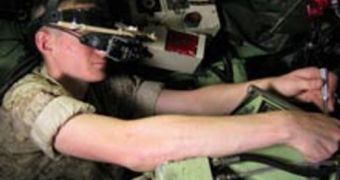Columbia University experts have just recently finished developing a new Augmented Reality (AR) system that allows mechanics to finish complex repairs for the machines they are charged with fixing in half the time they would need otherwise. Imagine a world in which, rather than reading an extensive manual, engineers and other workers could simply put on a pair of AR goggles that would display technical information about every object the person is looking at and propose various solutions to the identified problems. This is precisely what CU experts are aiming for, Technology Review reports.
Marine mechanics have been testing the new system for some time now, and they say that the AR goggles help them finish their work two times faster than they would need under normal conditions. AR is one of the most promising, new technologies, having the potential of being used for either entertainment (video games, movies, etc.) and practical applications, such as driving aids and assistance systems for the elderly, or for repair workers.
During their assessment of the AR goggles, the Marine engineers used them to repair a lightly armored vehicle. To each of the technician's wrists, the scientists attached an Android-powered G1 smartphone, whose touchscreen was used to queue up commands and instructions on the goggles. The AR system provided assistance by showing 3D arrows to components that were crucial in the repair process. It also displayed 3D models of the appropriate tools that would have yielded the best results for a certain situation.
Steven Feiner, a CU professor of computer science, and the Computer Graphics and User Interfaces Laboratory director, explains that the main idea behind the new AR system was for its users to be presented with the “information they need to find and fix problems in a way that is going to be more efficient and accurate.” The co-leader of the investigation has been United States Military Academy (USMA) Department of Systems Engineering Assistant Professor Steven Henderson. Their innovation won the Best Paper award last Wednesday at the International Symposium on Mixed and Augmented Reality (ISMAR 09), held in Orlando, Florida.

 14 DAY TRIAL //
14 DAY TRIAL //